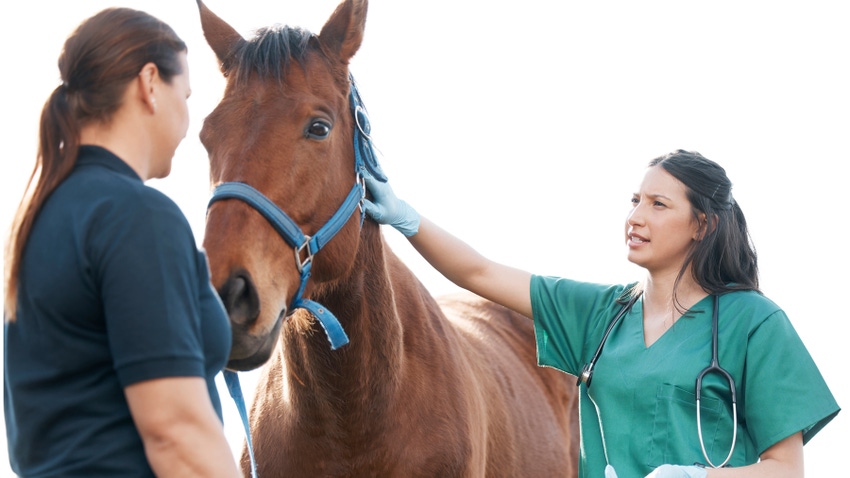
While horses are generally considered to be more accident prone than other livestock species, owners can be prepared to handle injuries with a bit of planning and preparation. North Dakota State University Extension gives these tips to horse owners to handle the unexpected injuries that can come with equine ownership.
Prevention is the first step to keeping herds safe. Inspecting pens, barns, stalls and fence lines for sharp edges, nails poking out, or loose wire can minimize injury to your animals. Regular maintenance and inspection of facilities is vital to stopping an accident before it happens.
Know your animals to spot any signs of changed behaviors. Understanding the herd dynamics and which horse is the herd “alpha” can help you see changes due to illness or disease. Knowing what normal means for your horse can allow conditions to be caught early and treated.
Prep for travel
Preparation for travel can mean different things for different trips. Check your trailer to ensure animal safety, ensure any travel across state lines has the necessary health paperwork from your veterinarian, and pack a first aid kit for any injuries that may occur.
Developing a veterinarian-client patient relationship before an emergency has occurred is essential. This way, the veterinarian will have sufficient knowledge of your animals and be familiar with their care. They have agreed to provide their medical judgment and know that you, as the animal’s owner, will follow care instructions.
In the event of an emergency or injury, your veterinarian should be the first call to determine if any medication or clinic treatment will be needed. Be wary of information you find online, as false advice is plentiful online and may hinder the recovery and care of your animal.
When determining what is an urgent emergency or nonurgent injury, think of this list from American Association of Equine Practitioners. Vaccines; treatment for chronic lameness or chronic loose stool; chiropractor work; joint injections; or updating a health certificate are things that you can schedule in advance as nonemergencies. Injuries or conditions that should be seen the same day include an allergic reaction, lacerations that are not over a joint, acute diarrhea, not eating or drinking, swollen legs, or a new onset of lameness.
An urgent emergency is something that means an animal should be seen as soon as possible. That includes a laceration over a joint, an allergic reaction where their breathing is compromised, difficulty breathing, uncontrolled bleeding, going down without being able to stand back up, fever, colic, choke or a grain overload.
When in doubt, contacting your veterinarian is the best thing to do if you are wondering whether your horse needs to be seen or not.
Equine first aid kit
NDSU Extension recommends these items be included in your first aid kit:
digital thermometer
examination gloves
duct tape
syringes
towels or rags
clean bucket
pocketknife
emergency contacts, such as your veterinarian
bandage scissors
hoof pick
flashlight
twine
ice
In addition to these items, NDSU experts say that medications should be included with your first aid kit. While many are prescription-only, eye ointment, wound care medication, antiseptic wash and NSAIDS are all over-the-counter options to include.
Assessing an emergency situation
With horses being prey animals, they may often mask their symptoms, so owners should know what to look for. Whether you see an obvious laceration or injury on your animal, or if they are acting lethargic or have a changed eating schedule, know your animal.
When looking over your animal, relaxed behavior could mean nothing is seriously wrong or if more screening is needed. An animal showing signs of pain could be holding its head down, trying to find a comfortable position, or with a hunched back. Animals could also be sweating, pacing, kicking out, or swishing their tails excessively or in an unusual manner.
While horses may find themselves in difficult situations more often than other animals, help prevent serious injury from affecting your equine partner by preventing and preparing for the worst.
Read more about:
HorsesAbout the Author(s)
You May Also Like






